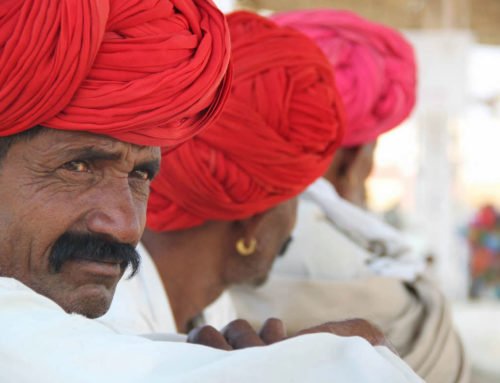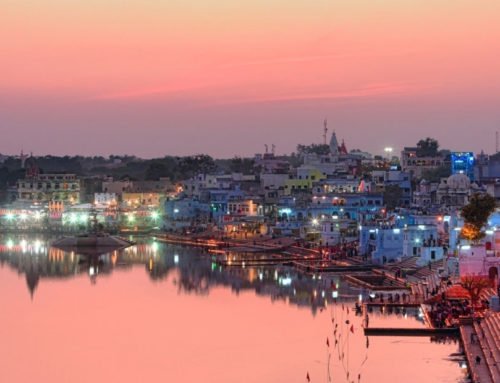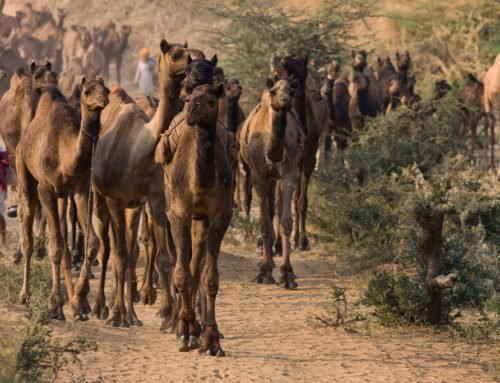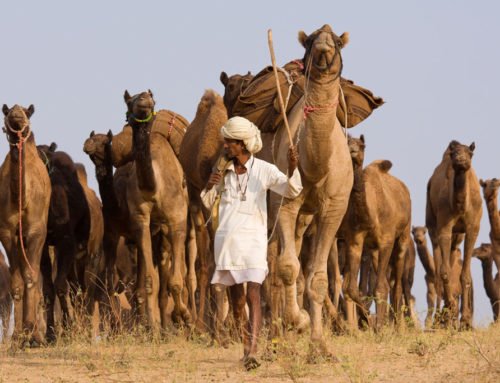Overview
- Features: Various competitions for animals and people
- Opening Times: All day
- Best Time to Visit: 2014 – October 30-November 6; 2015 – November 18-25; 2016 – dates to be announced
- Duration: 7 days
- Travelled By: Foot
- Cost: Free
- Address: Pushkar Maidan, Pushkar, Rajasthan, India
- Type: Event
Author Reviews[display_rating_item_results rating_form_id=”2″ rating_entry_ids=”1″ show_category_filter=”false” show_options=”true” result_type=”star_rating” preserve_max_rating=”true” show_title=”false” show_count=”false” ]
Total Rating: [display_rating_result rating_form_id=”2″ show_count=”false” show_rich_snippets=true] [accordions load=”1″] [accordion title=”User Reviews” last] [display_rating_item_results rating_form_id=”5″ show_options=”true” result_type=”star_rating” preserve_max_rating=”true” show_title=”false” show_count=”true” show_rich_snippets=true] [/accordion] [accordion title=”Add Review”][display_rating_form show_email_input=”true” show_comment_textarea=”true” show_name_input=”true” rating_form_id=”5″] [/accordion] [/accordions]
Summary
The Pushkar Fair is an annual week-long camel and livestock fair, culminating in religious rituals for Kartik Purnima. A big part of the Fair itinerary consists of competitions, ranging from camel decorating and horse dancing competitions to mustache and matka (water pot) competitions. The maidan is a great place to watch the competitions and activities unfold.
Competitions at Pushkar Fair
We returned to Pushkar towards the end of the Pushkar Fair, so we got to witness the last two days of the Fair before the closing ceremony. Here is an overview of the competitions we saw at the Pushkar Fair.
Matka Race at Pushkar Fair
The day started with a matka race for women. A matka is a clay water pot that Indian women use to carry water from the well or water body (lake, river) to their homes. This was an interesting race as both Indian and foreigners could participate. While the thought of entering the race flashed through my mind, Graham reminded me how embarrassing it would be if I fell along with the pot. So I refrained!
[singlepic id=2683 w=720 h=560 float=center]
Initially I thought that the matka was empty, but no it was filled with water to the top. As the women ran, several of them lost their grip and the matkas came crashing to the ground spilling the water. The winner of the race was, surprisingly, a European woman who was adept at holding on to her pot and running as fast as she could. Hats off to her for winning the matka competition!
Wrestling Competition at Puskhar Fair
[singlepic id=2680 w=720 h=560 float=center]
While the contenders for the matka race were being prepared, we went to watch the wrestling competition. Indian wrestling is a bit different to the Western style of wrestling. It is called pehlwani or kusti, and was developed in the Mughal era by combining native techniques with influences from Persia.
Most of the moves found in the wrestling forms of other countries are present in kusti, and some are unique to India. These are primarily locks, throws, pins, and submission holds. Kusti does not permit strikes or kicks during a match. Among the most favoured maneuvres are the dhobi paat (shoulder throw) and the kasauta (strangle pin).
Wrestling competitions known as dangal, are popularly held in villages around India. The arena is either a circular or square shape, measuring at least fourteen feet across. Rather than using modern mats, the wrestlers train and compete on dirt floors. Hence, the maidan at the Pushkar Fair was a perfect venue for a wrestling match.
The match was preceded by the wrestlers throwing a few handfuls of dirt from the floor on themselves and their opponent as a form of blessing. Despite the marked boundaries of the arena, the competitors could go outside the ring during a match with no penalty. There were no rounds but the length of every bout was specified beforehand; it seemed to go on for about 25–30 minutes.
While we didn’t stick around to watch the end of the match, a win is achieved by pinning the opponent’s shoulders and hips to the ground simultaneously, although victory by knockout, stoppage or submission is also possible.
Matka Phod Competition at Pushkar Fair
[singlepic id=2687 w=720 h=560 float=center]
Following the matka race was a matka phod competition for men. There were two teams – one consisting of Indian men and the other foreigners. The aim of the competition was to hit a matka hanging from a high pole. The matka must have been ten feet high, so the teams had to make a pyramid shape by climbing on top of each other, like gymnasts do. First off was a couple of practice sessions, where each team devised strategies on how best to climb on top of each other, without falling down and high enough to reach the matka with a stick.
At first, it seemed that the foreigners had their strategy well organised, especially since they were getting advice from experienced Indian men. However, the Indians had an advantage over the foreigners. They were thin, lanky and were as light as a feather.
When it came to the final of the competition, each group was timed and the team that got to the matka first would be the winner. Within minutes of the timer starting, the Indians were off to a flying start, each one jumping on top of the other till the last guy reached the top and hit the matka with a stick. Meanwhile, the foreigners were struggling as their pyramid continuously fell over. What a shame! Nevertheless, they should be given points for effort, as they continued to try to stand on each other, until they finally succeeded in breaking the matka with a stick. That was 30 minutes after the Indian team had completed the task.
It was an exciting competition to watch, and the entire crowd got into it with cheers and sighs going off when the Indian made it and the foreigners fell over.
Horse Competition at Pushkar Fair
[singlepic id=2685 w=720 h=560 float=center]
A few days later, we returned to Pushkar during the Pushkar Fair to witness the horse competitions. The horse competition is like a best in breed, where horses are inspected for their pedigree.
Above is a picture of the winner of the best horse competition. He was the biggest horse in the competition, and the way he was being paraded around was proof that he was a favourite to win.
[singlepic id=2696 w=720 h=560 float=center]
The main judge of the horse competition looked like a sheriff with boots, top hat and all. He went around to each horse individually and inspected them closely. Their teeth, hair, shin, eyes, hooves and other body parts are inspected to see which horse had the best pedigree. He was supported by two other judges who came to his aid in the final as there was a tie between a couple of horses.
Kabaddi Competition at Pushkar Fair
[singlepic id=2694 w=720 h=560 float=center]
In the afternoon, we went across to a kabaddi match. Considered to be the national sport of India, kabaddi is a game where two teams occupy opposite halves of a field and take turns sending a “raider” into the other half, to win points by tackling members of the opposing team. As long as he’s in the other team’s side, the raider must keep repeating the word ‘kabaddi’ till he returns to his side. The other team has to hold the raider down until he’s out of breath and without him getting to the lines.
There is also a bonus line which ensure extra points for the raider if he manages to touch it and return to his side of the field successfully.The word Kabaddi is derived from a Tamil word meaning “holding of hand”, which is indeed the crucial aspect of play.
I used to play this game occasionally when I was in school. Once I explained the rules to Graham, he really enjoyed the game and we sat in the maidan in the afternoon watching several teams compete against each other.
Mustache Competition at Pushkar Fair
[singlepic id=2689 w=720 h=560 float=center]
There were other competitions held earlier in the week that we had missed. Perhaps the most popular competition is the mustache competition. People come from far and wide within India to take part in this prestigious competition.
Above is a photo of the winner of the mustache competition from 2009 (Courtesy: Boston Globe). Contestant J.S. Chounan shows his moustache to the crowd after winning the annual “longest moustache” competition at the Pushkar Fair in 2009. According to locals his mustache is a combined total of 11 feet (3.35 meters) long and took 18 years to grow.
Horse Dance Competition at Pushkar Fair
Above is a video of a horse dance competition from 2011, which shows a few different snippets of horses dancing to the beat of a drum, as well as horses walking on their back legs. These horses have good gymnastic skills, and while it’s nice to see them perform, it’s a bit sad to see them being made to walk on their back legs.
[singlepic id=2697 w=720 h=560 float=center]
Above is the winner of this year’s horse dance competition. We met the horse, trainer and owner before the competition, and the owner told us he was going to win. While I thought he was over-confident at that time, he did win indeed!
I love the blue eyes on this horse.
Camel Dance Competition at Pushkar Fair
[singlepic id=2681 w=720 h=560 float=center]
The camel dance competition is much like the horse dance competition, only a little different. The camel is highly decorated with colourful ties and tassles on its feet. Some have small bells tied to their ankles, and bracelets around their feet. The camel starts to bounce up and down on its two front feet, dancing to the rhythm of the drum played by his handler for a few minutes. Not only are they beautiful, they are talented as well.
Camel Decoration Competition at Pushkar Fair
[singlepic id=2686 w=720 h=560 float=center]
Last but not the least is the camel decoration competition. Held during the first couple of days of the Pushkar Fair, camels are decorated with all sorts of items and paraded around in front of the judges.
Above is the picture of the winner of the camel decoration competition (Courtesy: www.richardarunachala.wordpress.com). The winner was decorated with coloured rope, yarn balls and tassles. Even the camels’ legs are decorated with colourful ties and tassles and small bells on its feet. Other camels could be decorated in anything, even mirrors, as in the case of one other camel.
Competitions run from the beginning to the end of the Pushkar Fair. While it is difficult to stay in Pushkar for the entire length of the Fair, a couple of days is sufficient to get an idea of what the Fair is about, see a few competitions, and enjoy the lively and bustling atmosphere in the maidan. Even though we missed the start of the Fair, we were there towards the end and got to watch a lot of fun and exciting events.







